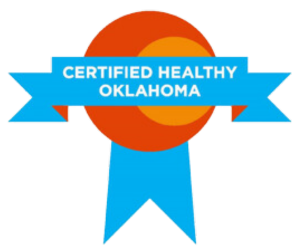TULSA, OK – [August 14, 2020] – The Tulsa Health Department recommends parents of children returning to in-person learning to plan for possible school and/or classroom closures for quarantine. The best practices is to follow CDC guidelines to ensure the safety of your student as well as the faculty and staff at your child’s school.
According to the data, COVID-19 is still widespread across Tulsa County. If multiple children or school staff within a school test positive for COVID-19, the school could possibly close. Similarly, if a close contact of your child (within or outside of school) tests positive for COVID-19, your child may need to stay home for a 2-week quarantine period. Parents may need to consider the feasibility of teleworking, taking leave from work, or identifying someone who can supervise your child in the event of school building closures or quarantine.
“The more people a student or staff member interacts with, and the longer that interaction, the higher the risk for COVID-19 to spread,” said THD Executive Director Dr. Bruce Dart. “Everyone in Tulsa County can do their part to slow the spread and keep students safe. Wear your mask, wash your hands, and watch your distance. This will go a long way to lessen the spread of illness and viruses.”
COVID-19 Prevention, Mitigation and Isolation Recommendations:
Don’t send your children to school if they are sick.
If you’re waiting on a test result for your child, particularly if your child is sick or has been exposed to another positive case, you must isolate your child at home until the test result comes back negative. The Tulsa Health Department continues to provide testing by appointment only.
If a parent or other household member has been tested for COVID-19, and is awaiting results, keep your child home from school until the household member receives the results of their test.
If your child has been exposed to a positive case, within or outside of school, they still must quarantine for 14 days (even if they receive a negative test).
If the child’s test result comes back positive, do not send the child to school, even if the child has no symptoms. The child must be isolated at home (an adult must be present at home with a young child who is isolated) for at least 10 days (from the date they were tested). Even after the 10 days, the child must be fever free for at least 24 hours and have improved symptoms.
If you have received a positive result from a lab, do not wait on a contact tracer to call you. You must isolate at home.
Parents may need to consider the feasibility of teleworking, taking leave from work, or identifying someone who can supervise your child in the event of school building closures or quarantine.
Since the beginning of March, THD staff have fielded questions from local school officials to provide guidance as school officials determine the best course of action to keep their students, faculty and staff safe. Even still, transmission of the virus is still possible so it is critical parents remember to teach their kids about safe practices such as wearing a mask, washing hands, not sharing personal items and keeping their distance from others when possible during the school day. A majority of COVID-19 positive cases do not have any symptoms, so it is important for children and adults alike to practice these prevention steps to be protected from exposure to COVID-19 and help reduce the spread of the virus in our community.
“Schools are an important part of the infrastructure of our communities, as they provide safe, supportive learning environments for students, employ teachers and other staff, and enable parents, guardians, and caregivers to work,” said Dr. Dart. “While there is no way to ensure zero risk of infection, it is important to understand potential risks and how to adopt different types of prevention measures when resuming activities, including returning to in-person learning.”
For more information, please call the Tulsa Health Department at 918-582-9355 or visit our COVID-19 page.
Resources:
• CDC Back to School Planning: Checklists to Guide Parents, Guardians, and Caregivers
• CDC School Decision-Making Tool for Parents, Caregivers, and Guardians
###






